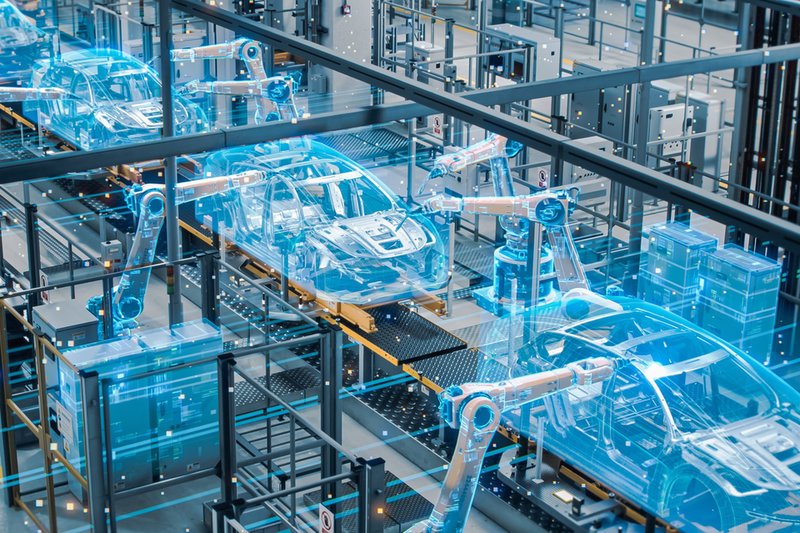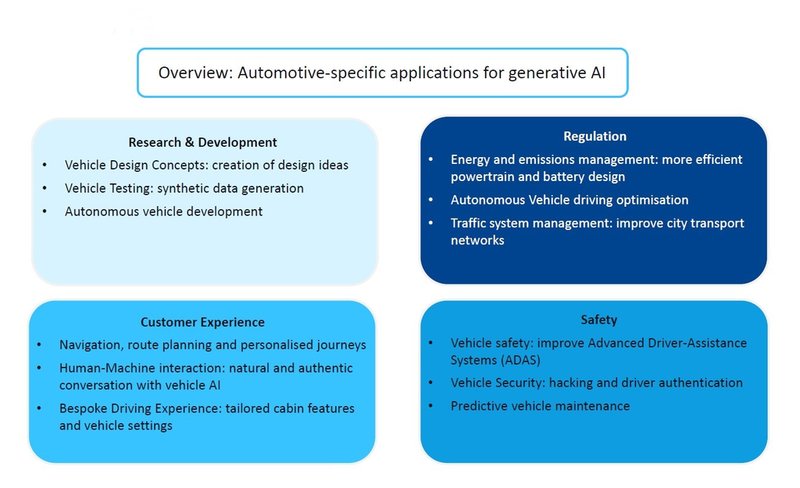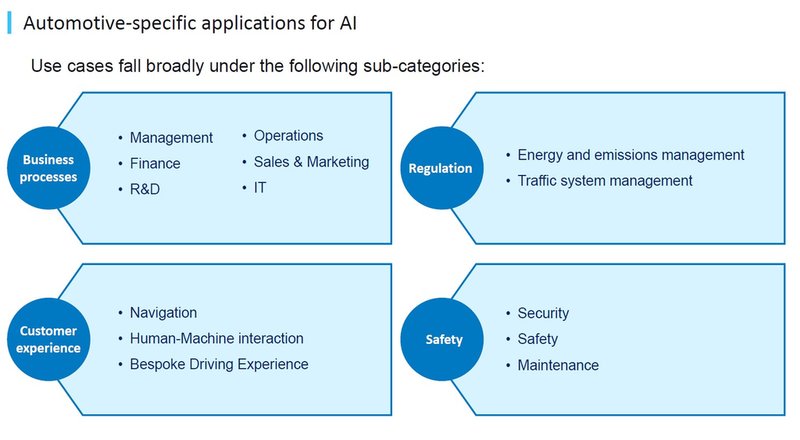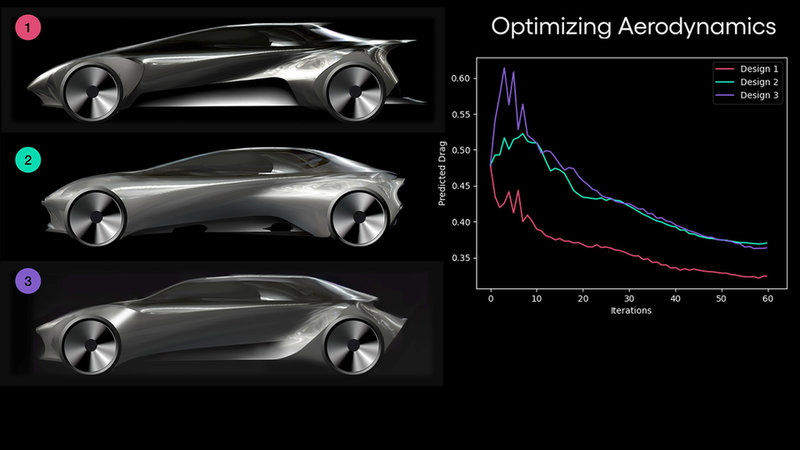Feature
AI will make an even greater impact on automotive industry operations
All along the automotive value chain, AI applications are set to expand further.

Credit:
Generative AI can support efficiencies across the automotive sector, from inputs into a broad array of business processes , to customer experience, safety and regulation.
This impact will only increase as generative AI becomes more accurate and is able to provide reliable factual advice. Use cases today revolve around vehicle design, safety development and human vehicle interaction.


Use case: Toyota uses Generative AI to enhance vehicle design
The Toyota Research Institute (TRI) uses generative AI to enhance the design process of its vehicles. The company's designers initially use publicly available text to image generative AI tools as an early step in their creative process. However, with the new advancements in this creative branch of AI technology, the designers are now able to use it to design initial sketches and input engineering constraints into their models, streamlining the design reconciliation and engineering consideration stage of the vehicle design process.
Avinash Balachandran, the director of TRI's Human Interactive Driving division said: “This technique combines Toyota’s traditional engineering strengths with the state of the art capabilities of modern generative AI.”
The TRI generative AI enhanced design technique incorporates constraints such as vehicle structure dimensions and drag factors to optimise their computer aided design (CAD) process.
The tool can even understand and incorporate stylistic text prompts such as 'sleek' or 'modern' into the design output, to enhance the visual aesthetics of the design based on the trained data set.
This use of generative AI into CAD processes for vehicle design is expected to greatly reduce the initial sketch/idea design time and encourage greater innovation and exploration when creating future vehicle models.
By incorporating engineering constraints directly into the design process, this tool could also help Toyota design electrified vehicles more quickly and efficiently.
"Reducing drag is critical for improving the aerodynamics of BEVs to maximize their range,” said Takero Kato, BEV Factory President, Toyota Motor Corporation.

Vehicle design sketch incorporating the results of TRI’s new generative AI + optimization technique (courtesy of XD : Experimental Design Studio of Toyota).
Use case: Waymo leverages AI to simulate autonomous vehicle camera data
A key element in the development of self-driving technology is a simulation, which enables the selection and replay of the most complicated events from over 20 million autonomous miles on public roads. In US autonomous driving technology company Waymo has used AI to generate camera images for simulation using sensor data gathered by its self-driving cars. It employs the SurfelGAN technique, which reconstructs scenes and camera perspectives for positions and orientations by using texture mapped surface features.
Waymo offers a simple, data driven method for simulating sensor data in SurfelGAN . The AI generates and stores detailed information about the 3D geometry, semantics, and appearance of all objects in the scene using feeds from real world Light Detection and Ranging (LiDAR) sensors and cameras.
SurfelGAN renders the simulated scene from various distances and viewing angles based on the reconstruction. The module GANs transforms surfel image renderings into visuals that appear realistic. When combined with actual instances from a training data set, the generator model’s synthetic examples from random noise collected using a distribution are sent to discriminators, which try to tell the two apart. Both the generators and discriminators continue to advance in their respective fields unless the discriminators are unable to distinguish between the real examples and the synthetic examples with better than the 50% accuracy anticipated of chance.
The SurfelGAN module learns without reference to known, labelled, or annotated outcomes, which allows it to infer patterns within the corpora (Waymo’s open source corpus of self-driving vehicle sensor logs). Every time the discriminators properly identify a synthesized work, they provide the generators with feedback on how to improve output so that it can be more realistic in future.
Use case: Mercedes-Benz Direct Chat: an internal ChatGPT application for employees
Mercedes-Benz is rolling out an internal web application for its employees – the MercedesBenz Direct Chat. It uses OpenAI´s ChatGPT technology through Microsoft Azure OpenAI Service. It's a text generator that uses machine learning and natural-language processing to deliver precise and contextual answers in just a few seconds.
The intuitive and user-friendly MercedesBenz Direct Chat can, for example, help with the creation of e-mails, reports and other work documents, or even summarise longer texts. It will initially be available in English and German. Applications based on generative artificial intelligence promise to streamline processes and tasks and save valuable time, especially in administration. MercedesBenz expects this to lead to significant gains in efficiency. The integration of this innovative technology into daily work routine should further help to continuously offer better solutions for customers.
Jan Brecht, Chief Information Officer (CIO) of MercedesBenz Group AG, said: "AI is a booster of the digital transformation. That's why our employees should be given the opportunity to work with this ground-breaking technology and gain their own experience in a protected environment. The introduction of MercedesBenz Direct Chat based on Microsoft Azure OpenAI Service marks a significant milestone on our way to becoming a digital company, and its utilisation will help lead us into an even more efficient future."
Mercedes says that by the end of the year, most of the workforce will be able to use the application and become more familiarised with the possibilities of generative AI in a secure environment – enabling them to learn its opportunities and risks. Terms of use have been drawn up specifically for this purpose. For example, the generated output must be checked for accuracy and clearly labelled if the text has not received a substantial review and validation by the user.
Sabine Kohleisen, Member of the Board of Management of MercedesBenz Group AG responsible for Human Relations and Labour Director, said: "Artificial intelligence won’t just support in taking over repetitive and routine tasks, it can also support more complex processes.
“This will increasingly free up time and capacity for more creative and more demanding activities. Every day, I’m seeing how the MercedesBenz team is embracing this change and is learning how to make the best possible use of digital opportunities like AI. In this way, each and every one of us is investing in their own future and opening up new professional opportunities for themselves. With Turn2Learn, our company is providing employees with appropriate qualifications – including for MercedesBenz Direct Chat."
In terms of the customer interface, Mercedes-Benz is also bringing ChatGPT to MBUX vehicles for US customers via Microsoft Azure OpenAI Service. This innovation for the MBUX voice assistant illustrates where the connected interface is heading.